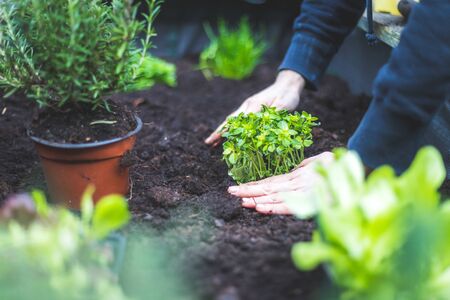Introduction to Ayurvedic Herbs and Their Benefits
Ayurveda, an ancient system of holistic medicine originating from India, has a history spanning over 5,000 years. Rooted in the Sanskrit words “ayur” (life) and “veda” (knowledge), Ayurveda is often translated as the “science of life.” This tradition places great emphasis on balancing mind, body, and spirit through natural means, with medicinal herbs playing a central role in achieving this equilibrium. In recent years, interest in Ayurveda has been growing steadily in the UK, as more people seek gentle, plant-based approaches to wellbeing that complement contemporary lifestyles. Ayurvedic herbs are renowned for their multifaceted health benefits, supporting everything from digestion and immunity to mental clarity and relaxation. Planting an Ayurvedic herb garden in the UK not only connects you with this rich heritage but also enables you to cultivate remedies tailored to your individual needs, right at home. For gardeners curious about sustainable wellness practices and cultural exchange, nurturing these time-honoured plants can be both a rewarding experiment and a practical step towards holistic self-care.
Choosing the Right Ayurvedic Herbs for the UK Climate
Establishing an Ayurvedic herb garden in Britain demands a thoughtful approach, especially when it comes to selecting plants that will thrive in our sometimes unpredictable weather. The UK climate is known for its moderate temperatures, frequent rainfall, and short summers—conditions that can pose a challenge to many traditional Indian herbs. However, with some experimentation and adaptation, you can successfully grow a selection of resilient Ayurvedic plants right here at home.
Key Considerations for Plant Selection
When choosing herbs, its vital to consider their tolerance to cold, dampness, and fluctuating light levels. Hardy perennials and annuals with a degree of flexibility are ideal candidates. Opt for varieties that are not only central to Ayurvedic practice but have also shown adaptability to British gardens through trials or horticultural experience.
Recommended Ayurvedic Herbs for UK Conditions
| Herb Name | Ayurvedic Use | Growing Advice | Hardiness |
|---|---|---|---|
| Ashwagandha (Withania somnifera) | Adaptogen; stress relief, immune support | Prefers well-drained soil and full sun; start indoors in late winter | Tender perennial—requires protection from frost |
| Brahmi (Bacopa monnieri) | Cognitive enhancer, memory tonic | Loves moist conditions; thrives in pots or boggy patches | Half-hardy—best grown as an annual or brought inside during winter |
| Holy Basil/Tulsi (Ocimum tenuiflorum) | Immunity booster, anti-inflammatory | Sow under cover; acclimatise outdoors after last frost; prefers warmth and full sun | Tender annual—treat as a summer bedding plant in the UK |
| Turmeric (Curcuma longa) | Anti-inflammatory, digestive aid | Grow indoors or in a greenhouse; needs warmth and humidity | Tender perennial—not frost tolerant |
| Coriander (Coriandrum sativum) | Digestive health, cooling properties | Easily grown from seed; sow successively from early spring onwards outdoors | Hardy annual—well suited to UK gardens |
| Fenugreek (Trigonella foenum-graecum) | Lactation support, metabolic health | Sow directly into soil after last frost; enjoys full sun and well-drained earth | Hardy annual—germinates well in cool British springs |
| Aloe Vera (Aloe barbadensis miller) | Cools inflammation, soothes skin irritation | Best grown in pots indoors or in greenhouses; avoid overwatering | Tender succulent—cannot withstand prolonged cold or wetness outside |
| Moringa (Moringa oleifera) | Nutrient-rich superfood, detoxification aid | Requires plenty of light and heat; best kept in containers and overwintered indoors | Tender tree—not suitable for open ground except in warmest parts of the UK or under glass |
Practical Tips for Success
– Start tender herbs indoors or under glass before the last expected frost.
– Utilise cloches, greenhouses, or cold frames to extend the growing season.
– Experiment with microclimates: south-facing walls, patios, or sheltered spots can provide extra warmth.
– Consider container gardening for less hardy species that need winter protection.
– Choose locally sourced seeds or young plants whenever possible—these are more likely to have acclimatised somewhat to British conditions.
The process of adapting Ayurvedic gardening traditions to the UK may require patience and trial-and-error. However, by prioritising resilient varieties and making use of practical supports like greenhouses and indoor propagation, you can cultivate a rewarding blend of healing plants right on your doorstep.

3. Preparing the Garden: Location, Soil, and Layout
Choosing the right spot for your Ayurvedic herb garden is a crucial first step, especially in the varied climate of the UK. Look for an area that receives at least six hours of sunlight daily, as most Ayurvedic herbs—such as holy basil (tulsi), ashwagandha, and brahmi—thrive in well-lit conditions. If your garden is shaded or you live further north, opt for south-facing spaces or consider growing some herbs in pots that can be moved to follow the sun.
Soil Preparation Tips
The typical British soil can range from clay to sandy, so its worth testing your soil’s texture and pH before planting. Most Ayurvedic herbs prefer slightly acidic to neutral soil with good drainage. If your soil is heavy or tends to hold water, mix in organic matter like compost or well-rotted manure to improve structure and fertility. Raised beds are another practical solution for improving drainage, particularly in wetter regions.
Layout Ideas for All Garden Sizes
For those with limited space, such as a small London terrace or a balcony, container gardening is highly effective. Use deep pots for root herbs like ashwagandha and group smaller varieties like coriander or mint together in window boxes. If you’re fortunate to have a larger plot, consider traditional rectangular beds or circular mandala layouts—these not only look attractive but also make it easier to organise herbs by their water and sunlight needs.
Additional Practical Considerations
Think about access to water, especially during dry spells common in certain parts of the UK. A nearby tap or rainwater butt can save time and effort. Paths between beds should be wide enough for comfortable access without compacting the soil around your plants. Finally, label each herb clearly; many Ayurvedic plants may look similar at first glance, and this helps both in maintenance and when harvesting later on.
4. Sowing, Planting, and Year-Round Care
Establishing a thriving Ayurvedic herb garden in the UK requires careful planning and consistent attention throughout the seasons. Below is a step-by-step guide tailored to British conditions, helping you navigate the unique challenges of our climate.
Step 1: Starting Seeds Indoors
Many Ayurvedic herbs such as Tulsi (Holy Basil) and Ashwagandha benefit from an early indoor start due to the UK’s cool spring temperatures. Sow seeds in biodegradable pots on a warm windowsill or under grow lights from February to April. Keep the compost lightly moist and ensure good air circulation to prevent damping off disease.
Step 2: Transplanting Seedlings
Once the threat of frost has passed, typically after mid-May, harden off your seedlings by gradually exposing them to outdoor conditions over 7-10 days. Choose a sheltered spot with at least six hours of sunlight per day. Prepare the soil by mixing in organic matter such as well-rotted compost.
Transplanting Guide Table
| Herb | Spacing | Best Month to Transplant |
|---|---|---|
| Tulsi (Holy Basil) | 30 cm apart | Late May-June |
| Brahmi | 20 cm apart | June |
| Ashwagandha | 40 cm apart | Late May-June |
Step 3: Watering and Feeding Through the Seasons
The unpredictable British weather means you must monitor moisture levels carefully. Herbs generally prefer well-drained soil; water when the top inch feels dry but avoid waterlogging, which can be common in wet summers. Feed with a balanced organic fertiliser every 4-6 weeks during active growth.
Seasonal Care Checklist
| Season | Main Tasks |
|---|---|
| Spring | Sow seeds indoors, prepare beds, transplant seedlings after last frost. |
| Summer | Mulch to retain moisture, regular watering, watch for slugs and aphids. |
| Autumn | Harvest mature herbs, remove debris, cover tender plants if frost threatens. |
| Winter | Protect perennials with fleece or cloches, plan crop rotation for next year. |
Pest and Disease Management in the UK Climate
Dampness invites slugs, snails, and fungal issues. Inspect plants regularly; hand-pick pests or use wildlife-friendly deterrents like copper tape. Promote airflow by spacing plants appropriately and remove any yellowing leaves promptly. In persistent wet periods, raise beds or add grit to improve drainage.
5. Harvesting and Using Ayurvedic Herbs in Daily Life
Bringing Ayurvedic herbs from garden to table is both rewarding and practical, particularly in the UK where seasonal changes dictate careful timing. Knowing when and how to harvest ensures the best potency and flavour from your herbs.
Best Practices for Harvesting
Harvest most leafy herbs like tulsi (holy basil) or brahmi in the morning, once dew has evaporated but before the midday sun. This preserves their essential oils and medicinal properties. Use clean, sharp scissors or secateurs to avoid damaging the plant. For roots such as ashwagandha, wait until autumn after the foliage dies back. Always leave enough of each plant behind—about one-third—to ensure healthy regrowth next season.
Simple Preparation Techniques
Once harvested, gently rinse your herbs in cool water to remove soil or insects. Drying is a common method—hang small bunches upside down in a dry, airy space away from direct sunlight. For quick use, chop fresh leaves for teas or tinctures. Roots can be sliced thinly and dried for future decoctions. Consider infusing oils with herbs like turmeric or making ghee-based herbal pastes for culinary and wellness applications.
Integrating Herbs into British Routines
Ayurvedic herbs adapt beautifully to British kitchens and wellbeing practices. Add fresh tulsi leaves to a classic cup of English breakfast tea for a spicy twist, or stir chopped coriander into soups and stews for digestive support. Incorporate dried neem into homemade balms for soothing skin after a brisk countryside walk. Evening rituals might include golden milk made with turmeric root, or a calming brahmi infusion before bed. By blending Ayurvedic principles with familiar local habits, these herbs become an effortless part of everyday life in the UK.
Sustainability and Community Connections
Creating an Ayurvedic herb garden in the UK goes beyond individual wellbeing; it’s also about nurturing the environment and building community ties. Here are some practical tips for making your garden a force for good.
Fostering Biodiversity
Diversify your plant selections by including a mixture of Ayurvedic herbs alongside native British species. Not only does this create a more resilient ecosystem, but it also attracts pollinators like bees and butterflies, which are vital for healthy gardens. Consider companion planting—grouping herbs that support each other’s growth—to naturally deter pests and enrich the soil.
Ethical Sourcing of Seeds
When sourcing seeds for your Ayurvedic garden, opt for reputable suppliers who prioritise organic, non-GMO seeds and transparent supply chains. Look out for UK-based companies with ethical credentials or local seed swaps to minimise your carbon footprint. If possible, save seeds from your own plants season to season, promoting self-sufficiency and genetic diversity in your patch.
Engaging with Local Communities
Joining local gardening groups or community allotments is a great way to share knowledge, swap seeds, and learn from experienced growers. Many UK towns and cities have vibrant gardening communities—check noticeboards at libraries or garden centres, or search online forums. By participating in these networks, you’ll gain practical advice on growing Ayurvedic herbs in the British climate and contribute to collective efforts such as composting schemes or wildlife corridors.
Tip:
If you’re new to community gardening, consider volunteering at an allotment open day or attending a workshop focused on sustainable gardening practices. These events are excellent opportunities to connect with like-minded individuals and expand your gardening toolkit.
Final Thoughts
Nurturing sustainability and forging connections with your community not only enhances the success of your Ayurvedic herb garden but also contributes positively to local biodiversity and social wellbeing—a truly holistic approach rooted in both tradition and modern British values.

